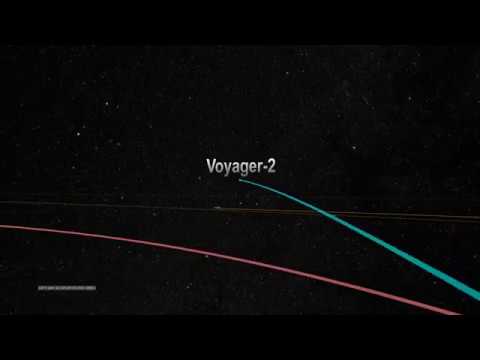During a press briefing at NASA headquarters, scientists announced that the Voyager 1 spacecraft has officially left our solar bubble and has reached interstellar space. The Voyager Interstellar Mission (VIM) seeks to extend NASA’s exploration of the solar system beyond the outer planets — to the outer limits of the Sun’s sphere of influence, and possibly beyond. Voyager 1 and its twin Voyager 2 were launched 16 days apart in 1977. Also, Off the Earth, For the Earth, Comings and Goings, Flight Of Cygnus, Rockets 2 Racecars, InSight Landing Sites and more!
Voyager in Interstellar Space! On This Week @NASA

Comments
9 responses to “Voyager in Interstellar Space! On This Week @NASA”
-
NASA needs moar funding to reach its full potential.
-
SpyOpz94 is moar is tamed wild boar?
-
nsa needs no more funding they don't
tell us the truth. why do u think they don't do live corvage. they stopped in 1991 r 92 look it up and see why?????? -
the error is added daily when neglected. In one year you would end up having not 0.8cm but 3m of error (i didnt check your 0.8cm). The atom clocks on the satellite are going faster than those here on earth (stronger gravitational fields).
-
I just meant your 0.8cm daily add to 3m in a year when negected. when you reset something you take relativistic effects into account and our whole discussion makes no sense.
-
The Vojager 1 in interstellar space is a great pride and a great feat for humanity. I seem to live in the star trek's science fiction thanks you Nasa!
-
taking relativistic effects into account doesnt mean you have to use some fancy equations. it just means you do something to avoid errors caused by relativistic effects. resetting your clock based on star locations is one of them. if you would not take them into account you would just live with the error and somehow calibrate your gps to it.
-
@MegaBanne: You're right, is negligible, and if we do not confuse time dilation and contemporary events, a method would be: ground station placed at the equator, equatorial satellite fixed on the stars, the earth rotates, the satellite keeps track of time, time dilation is not is always the same but decreases or increases because the ground station moves towards or away from the source satellite
-
It's all relative.




Leave a Reply